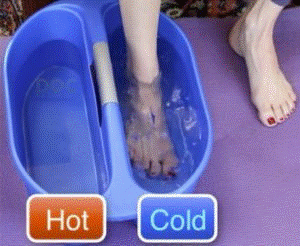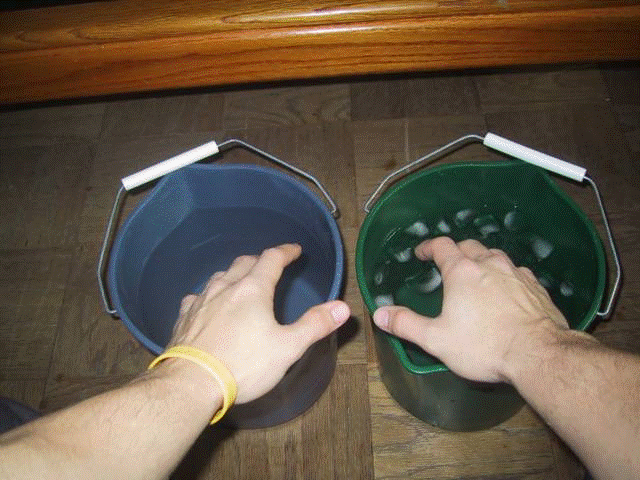Contrast bath is often a popular term in the physical therapy world, nowadays gaining its utmost popularity. It is used for pain relief, post-fracture treatment, heel pain, general relaxation, edema, inflammation, swelling, muscle spasm, sprained ligaments, and much more.
Contrast bath therapy involves submerging targeted body parts inside cold water and then simultaneously in warm water alternatively with few minutes holding period.


WORKING PRINCIPLE OF CONTRAST BATH THERAPY: –
Contrast bath therapy works on the principle of vasoconstriction and vasodilation of vessels at the targeted area and promotes healing.
Alternatively using the body part in cold water results in constriction of vessels followed by dilation of blood vessels when submerged into warm water. That results in pumping action into vessels and increases blood circulation that will finally promote the generalized healing process of the affected area.
According to the theories, it’s concluded that warm water soaking results in oxygenation of blood and removal of waste products from the bloodstream through lymphatics, resulting in the promotion of the healing process of the affected area.
HOW TO PERFORM CONTRAST BATH THERAPY: –
- Make sure your body part is clean remove any oil, moisture, or cream.
- Submerge the targeted body part in warm water (38°C–40°C) for 5-8 minutes.
- Then, take it out and dip it into cold water(8°C–10°C) for 1 minute.
- Again, repeat this process with warm water for 4 minutes, followed by cold water for a minute about three times.
- This process will take around 20-25 minutes.
NOTE: – There are various techniques and time limits for contrast bath therapy (according to the expertise of health care practitioners).The technique which is mention over here is a general form of practice.
HOW TO PREPARE A CONTRAST BATH AT HOME: –
- Take two buckets or tubs, according to the size of your body part.
- Fill one bucket with cold water and the other with warm water.
- Place both the buckets close to each other and use a carpet below them (to avoid fall risk).
- Immerse your body part alternatively as directed.
SITES OF CONTRAST BATH THERAPY APPLICATION: –
- Elbow
- Forearm
- Wrist
- Fingers
- Knee
- Calf Muscles
- Ankle
- Foot
- Heel
- Both legs together
INDICATIONS:
- Inflammation
- Carpel Tunnel Syndrome
- Sprained Ligaments
- Postoperative Fractures
- Plantar Fasciitis
- Heel Pain
- Rheumatoid Arthritis
- Musculoskeletal Pain
- Muscle Spasm
- Joint Stiffness
- Calf Strain
- Tennis Elbow
CONTRAINDICATIONS:
- Hypertension
- Ulcers
- Open Wounds
- Infected Wounds
- Diabetes
- Hypersensitive to hot or cold
- Hydrophobia
- Seizures
WARNING: Patients can use contrast bath therapy under the supervision and guidance of a competent physiotherapist. As, performing this therapy on your own might increase the chances of infection or injury.
CONCLUSION: –
Contrast bath therapy is a hydro-based therapy, that will result in blood enrichment and waste removal from the bloodstream. The therapy will help to reduce pain, swelling, inflammation, muscle spasm and gives general relaxation.
Prakash Pandey
Physical Therapy Student
Vice-President
Punjab Student Wing
(GAPT)






